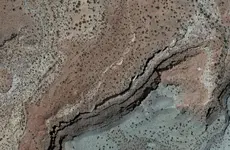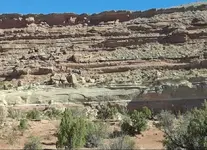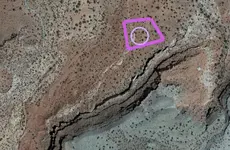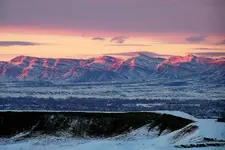You are using an out of date browser. It may not display this or other websites correctly.
You should upgrade or use an alternative browser.
You should upgrade or use an alternative browser.
New Project
- Thread starter bookcliff
- Start date
Red_desert
Gold Member
- Joined
- Feb 21, 2008
- Messages
- 7,154
- Reaction score
- 3,790
- Golden Thread
- 0
- Location
- Midwest USA
- Detector(s) used
- Garrett Ace 250/GTA 1,000; Fisher Gold Bug-2; Gemini-3; Unique Design L-Rods
- Primary Interest:
- All Treasure Hunting
Good to see you are still around bookcliff. Found some interesting places here. I'd check out the top right square.

Last edited:
Red_desert
Gold Member
- Joined
- Feb 21, 2008
- Messages
- 7,154
- Reaction score
- 3,790
- Golden Thread
- 0
- Location
- Midwest USA
- Detector(s) used
- Garrett Ace 250/GTA 1,000; Fisher Gold Bug-2; Gemini-3; Unique Design L-Rods
- Primary Interest:
- All Treasure Hunting
bookcliff
Sr. Member
- #4
Thread Owner
Thank you Red_desert
Yes I'm still around. Older but not necessarily wiser.
I relocated recently and I am closer to this area now. Been busy gardening and need to get some prospecting in.
There are what I believe to be burial mounds in this area. Scattered 1-10 miles. Some nice ones I believe. I just take pictures of them.
Red_desert
Gold Member
- Joined
- Feb 21, 2008
- Messages
- 7,154
- Reaction score
- 3,790
- Golden Thread
- 0
- Location
- Midwest USA
- Detector(s) used
- Garrett Ace 250/GTA 1,000; Fisher Gold Bug-2; Gemini-3; Unique Design L-Rods
- Primary Interest:
- All Treasure Hunting
Yes, that is exactly what I was getting. Another spot in the photo seemed much older, so not marked here.Thank you Red_desert
Yes I'm still around. Older but not necessarily wiser.
I relocated recently and I am closer to this area now. Been busy gardening and need to get some prospecting in.
There are what I believe to be burial mounds in this area. Scattered 1-10 miles. Some nice ones I believe. I just take pictures of them.
Last edited:
Red_desert
Gold Member
- Joined
- Feb 21, 2008
- Messages
- 7,154
- Reaction score
- 3,790
- Golden Thread
- 0
- Location
- Midwest USA
- Detector(s) used
- Garrett Ace 250/GTA 1,000; Fisher Gold Bug-2; Gemini-3; Unique Design L-Rods
- Primary Interest:
- All Treasure Hunting
Remarkably similar sites exist in South/Central America or Mexico. Burial mounds and settler graves are protected in all states.
Last edited:
tamrock
Platinum Member
Pretty vast area to explore. I took this picture of the bookcliffs in 2014 at the entrance of the drag strip in GJ. I couldn't tell you how many times I've driven along I70 into Utah and on up to Price and wondered what might be hidden in those Bookcliff mountains.
Attachments
Whynotnow?
Bronze Member
- Joined
- Jul 7, 2022
- Messages
- 1,046
- Reaction score
- 2,167
- Golden Thread
- 0
- Location
- North Carolina
- Primary Interest:
- All Treasure Hunting
Great picture!Pretty vast area to explore. I took this picture of the bookcliffs in 2014 at the entrance of the drag strip in GJ. I couldn't tell you how many times I've driven along I70 into Utah and on up to Price and wondered what might be hidden in those Bookcliff mountains.
Red_desert
Gold Member
- Joined
- Feb 21, 2008
- Messages
- 7,154
- Reaction score
- 3,790
- Golden Thread
- 0
- Location
- Midwest USA
- Detector(s) used
- Garrett Ace 250/GTA 1,000; Fisher Gold Bug-2; Gemini-3; Unique Design L-Rods
- Primary Interest:
- All Treasure Hunting
A lot of history in those mountains, I'm sure. AI search turned out quite interesting.
The Book Cliffs, a series of desert mountains and cliffs in western Colorado, were inhabited by various prehistoric indigenous cultures. One of the prominent cultures that inhabited the region were the Ancestral Pueblo people, also known as the Anasazi. These people primarily lived on the mesa tops for around 600 years before many of them began moving into pueblos during the late 1190s 1. The Ancestral Puebloans left their mark in the region through the construction of Chaco-style masonry great houses, which became the focal point of many Puebloan villages after 1075 2. Other indigenous cultures, such as the Foothills Mountain Complex, also seasonally inhabited the Mesa Verde area, where the Book Cliffs are located, starting around 7500 BC 2. The region has a rich history of indigenous use and habitation, with archaeological artifacts spanning thousands of years, including cliff dwellings, villages, granaries, and ceremonial sites 3.
The Book Cliffs, a series of desert mountains and cliffs in western Colorado, were inhabited by various prehistoric indigenous cultures. One of the prominent cultures that inhabited the region were the Ancestral Pueblo people, also known as the Anasazi. These people primarily lived on the mesa tops for around 600 years before many of them began moving into pueblos during the late 1190s 1. The Ancestral Puebloans left their mark in the region through the construction of Chaco-style masonry great houses, which became the focal point of many Puebloan villages after 1075 2. Other indigenous cultures, such as the Foothills Mountain Complex, also seasonally inhabited the Mesa Verde area, where the Book Cliffs are located, starting around 7500 BC 2. The region has a rich history of indigenous use and habitation, with archaeological artifacts spanning thousands of years, including cliff dwellings, villages, granaries, and ceremonial sites 3.
Last edited:
Red_desert
Gold Member
- Joined
- Feb 21, 2008
- Messages
- 7,154
- Reaction score
- 3,790
- Golden Thread
- 0
- Location
- Midwest USA
- Detector(s) used
- Garrett Ace 250/GTA 1,000; Fisher Gold Bug-2; Gemini-3; Unique Design L-Rods
- Primary Interest:
- All Treasure Hunting
AI from the propecting angle.
The Book Cliffs in western Colorado have a rich history of mining, primarily focused on coal and iron ore. However, there is limited information available specifically regarding prospecting opportunities for precious metals in this area. Here are a few points to consider:
One such tale speaks of a long-lost gold mine that is said to be concealed within the depths of the Book Cliffs. According to local legend, a group of prospectors stumbled upon an abundance of gold ore within the cliffs many decades ago. Fearing that their newfound wealth would attract unwanted attention, they decided to keep the location of the mine a closely guarded secret.
As the story goes, the location of this hidden treasure was only known to a select few, and over time, their knowledge was lost to the sands of time. Some believe that a detailed map or journal, containing explicit instructions to the whereabouts of the mine, remains hidden within the cliffs or buried in the surrounding desert.
Over the years, treasure hunters and adventure seekers have ventured into the Book Cliffs in search of this elusive fortune. Armed with shovels, metal detectors, and a burning desire for untold wealth, they have scoured the rugged terrain, hoping to unravel the secrets that lie within.
While the veracity of these stories remains uncertain, the allure of hidden riches continues to captivate the imaginations of those who dare to explore the Book Cliffs. The rugged beauty of the landscape, with its towering cliffs and winding canyons, provides the perfect backdrop for these tales of fortune and adventure.
Whether these stories are simply the stuff of legends or hold a grain of truth is yet to be determined. But as long as the Book Cliffs stand, their enigmatic allure will continue to beckon those seeking the thrill of the unknown and the possibility of discovering a hidden treasure.
Please note that these tales are purely speculative and may not have any factual basis. They are part of the folklore and imagination that ad
Historically Utah...
The Book Cliffs, a series of desert mountains and cliffs in western Colorado and eastern Utah, have several historical significances:
The Book Cliffs in western Colorado have a rich history of mining, primarily focused on coal and iron ore. However, there is limited information available specifically regarding prospecting opportunities for precious metals in this area. Here are a few points to consider:
- Historical Mining: Mining activities in the Book Cliffs region have primarily revolved around coal and iron ore. Brigham Young, the leader of the Mormon church, recognized the need for iron and encouraged mining efforts in southern Utah, including the Book Cliffs area 1. However, information about specific precious metal prospecting sites in the Book Cliffs is scarce.
- Base Metals and Industrial Minerals: The mining industry in Utah, which includes areas near the Book Cliffs, is known for base metals, precious metals, and industrial minerals 2. While this suggests that there may be potential for precious metal prospecting in the broader region, it does not provide specific information about the Book Cliffs themselves.
- Local Mining Authorities: To obtain more detailed and up-to-date information on prospecting opportunities for precious metals in the Book Cliffs, it would be advisable to consult local mining authorities, geological surveys, or mining associations. These organizations can provide insights into any known or potential prospecting sites in the area.
- Treasure...
One such tale speaks of a long-lost gold mine that is said to be concealed within the depths of the Book Cliffs. According to local legend, a group of prospectors stumbled upon an abundance of gold ore within the cliffs many decades ago. Fearing that their newfound wealth would attract unwanted attention, they decided to keep the location of the mine a closely guarded secret.
As the story goes, the location of this hidden treasure was only known to a select few, and over time, their knowledge was lost to the sands of time. Some believe that a detailed map or journal, containing explicit instructions to the whereabouts of the mine, remains hidden within the cliffs or buried in the surrounding desert.
Over the years, treasure hunters and adventure seekers have ventured into the Book Cliffs in search of this elusive fortune. Armed with shovels, metal detectors, and a burning desire for untold wealth, they have scoured the rugged terrain, hoping to unravel the secrets that lie within.
While the veracity of these stories remains uncertain, the allure of hidden riches continues to captivate the imaginations of those who dare to explore the Book Cliffs. The rugged beauty of the landscape, with its towering cliffs and winding canyons, provides the perfect backdrop for these tales of fortune and adventure.
Whether these stories are simply the stuff of legends or hold a grain of truth is yet to be determined. But as long as the Book Cliffs stand, their enigmatic allure will continue to beckon those seeking the thrill of the unknown and the possibility of discovering a hidden treasure.
Please note that these tales are purely speculative and may not have any factual basis. They are part of the folklore and imagination that ad
Historically Utah...
The Book Cliffs, a series of desert mountains and cliffs in western Colorado and eastern Utah, have several historical significances:
- Sequence Stratigraphy: The Book Cliffs are one of the world's best places to study sequence stratigraphy. In the 1980s, Exxon scientists used the Cretaceous strata of the Book Cliffs to develop the science of sequence stratigraphy. The cliffs have preserved excellent strata of the foreland basin of the ancient Western Interior Seaway, providing valuable insights into the geological history of the region 1.
- Native American History: The area near the Book Cliffs is rich in Native American history. Along the border with Colorado in east-central Utah, there are ghost towns like Thompson Springs and Sego that have historical significance 2.
- Wildlife: The Little Book Cliffs Wild Horse Range, located in northwest Colorado near the Book Cliffs, is home to a diverse population of wild horses. The range includes horses of various colors and band sizes, making it an exciting and photogenic location. The wild horses are less skittish than other horses, providing ideal photo opportunities for visitors 3.
- Recreation: The Book Cliffs offer recreational opportunities for outdoor enthusiasts. The North Fruita Desert, located along the base of the Book Cliffs, provides 33 miles of singletrack mountain bike trails and an additional 25 miles of mixed-use singletrack. The area is popular for mountain biking, offering a mix of fast and flowy to tight and technical riding opportunities. The trails provide stunning views of the Grand Valley and beyond 4.
Last edited:
bookcliff
Sr. Member
- #11
Thread Owner
Pretty vast area to explore. I took this picture of the bookcliffs in 2014 at the entrance of the drag strip in GJ. I couldn't tell you how many times I've driven along I70 into Utah and on up to Price and wondered what might be hidden in those Bookcliff mountains.
Yep! That's the area. The Utah part. I've been studying that for years. Found a lot of interesting things. I've looked at it real close. Very rough country. Got maybe a few good leads.
okiedowser
Hero Member
I did find a marker tree in this area. Possibly more than one target.
Red_desert
Gold Member
- Joined
- Feb 21, 2008
- Messages
- 7,154
- Reaction score
- 3,790
- Golden Thread
- 0
- Location
- Midwest USA
- Detector(s) used
- Garrett Ace 250/GTA 1,000; Fisher Gold Bug-2; Gemini-3; Unique Design L-Rods
- Primary Interest:
- All Treasure Hunting
I noticed the cross to right side of photo but didn't say anything. Hard to see if recent or not. Then ancient indigenous rock carvings definitely are NOT Spanish markers. I don't know why treasure hunters in western states, seem to think every carving in stone must lead to treasure.
Last edited:
Red_desert
Gold Member
- Joined
- Feb 21, 2008
- Messages
- 7,154
- Reaction score
- 3,790
- Golden Thread
- 0
- Location
- Midwest USA
- Detector(s) used
- Garrett Ace 250/GTA 1,000; Fisher Gold Bug-2; Gemini-3; Unique Design L-Rods
- Primary Interest:
- All Treasure Hunting
Ancient Calendars With Huge Panels, High Circles Discovered on Pueblo Walls in Colorado, Archaeologists Say

The evidence for that comes from archeological discoveries along the Colorado-Utah state line. A researcher from Poland is fascinated by them.
"The agricultural Pueblo communities developed one of the most advanced Pre-Columbian cultures in North America," Radoslaw Palonka with the Jagiellonian University said.
Last edited:
Similar threads
Users who are viewing this thread
Total: 1 (members: 0, guests: 1)







